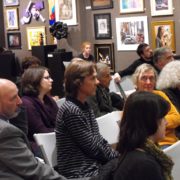Recap: ArtWatch International’s Sixth Annual James Beck Memorial Lecture
Ruth Osborne
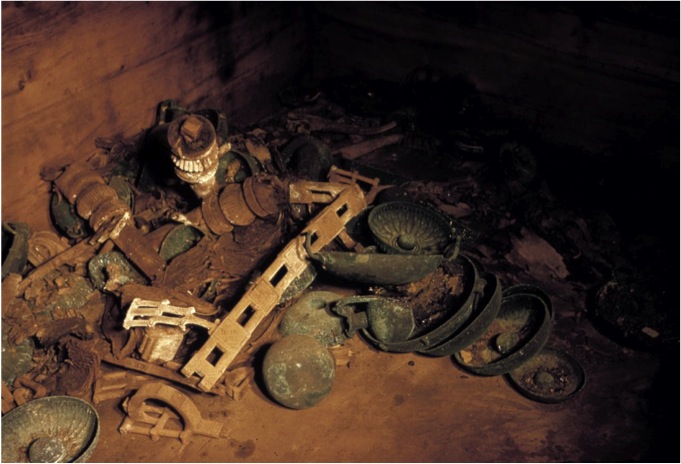
Inlaid Table from Tumulus MM in situ, 1957.
Last Thursday, November 6th, ArtWatch International hosted the sixth annual James Beck Memorial Lecture and Reception in New York at the historic Salmagundi Club on lower Fifth Avenue.
Alternating between London and New York, ArtWatch holds this event each year to honor memory, scholarly efforts, and unwavering commitment to artistic stewardship of its founder, Professor James Beck. Since Beck’s death in 2007, the lectures have been organized to continue Beck’s campaigning on the arts’ behalf, as well as to provide a platform for lectures by distinguished scholars, to commemorate his own contributions.
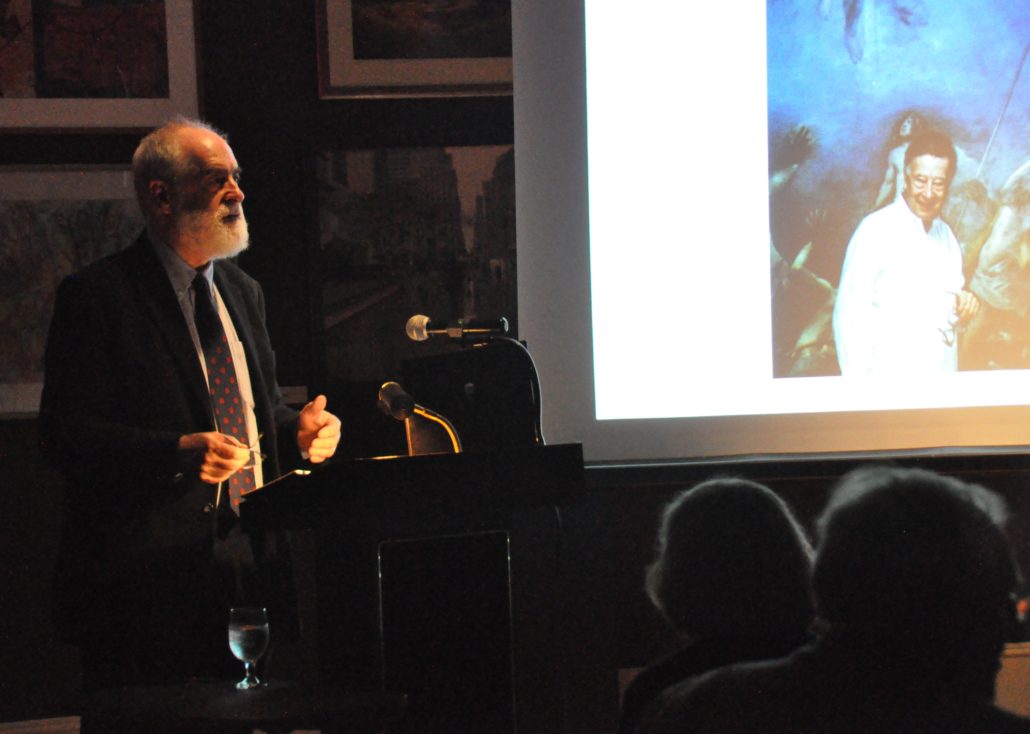
Michael Daley, Director of ArtWatch UK.
Another remarkable force in the art world, and supporter of Beck’s efforts, New York painter Frank Mason, is also honored at the Beck Memorial Lectures. The Frank Mason Prize is awarded each year to an individual who has contributed to a courageous effort to benefit art scholarship and research. Frank’s dedication to traditionalist artistic training, his long teaching career at the Art Students League in New York, and protests against harmful restorations at the Metropolitan Museum leave behind a strong legacy. He was also instrumental in the founding of a precurser to ArtWatch International, The International Society for the Preservation of Art. This year’s recipient, Dr. Martin Eidelberg, has expressed similar dedication to traditionalist methods of studying art in his work on the eighteenth-century French painter Jean-Antoine Watteau.
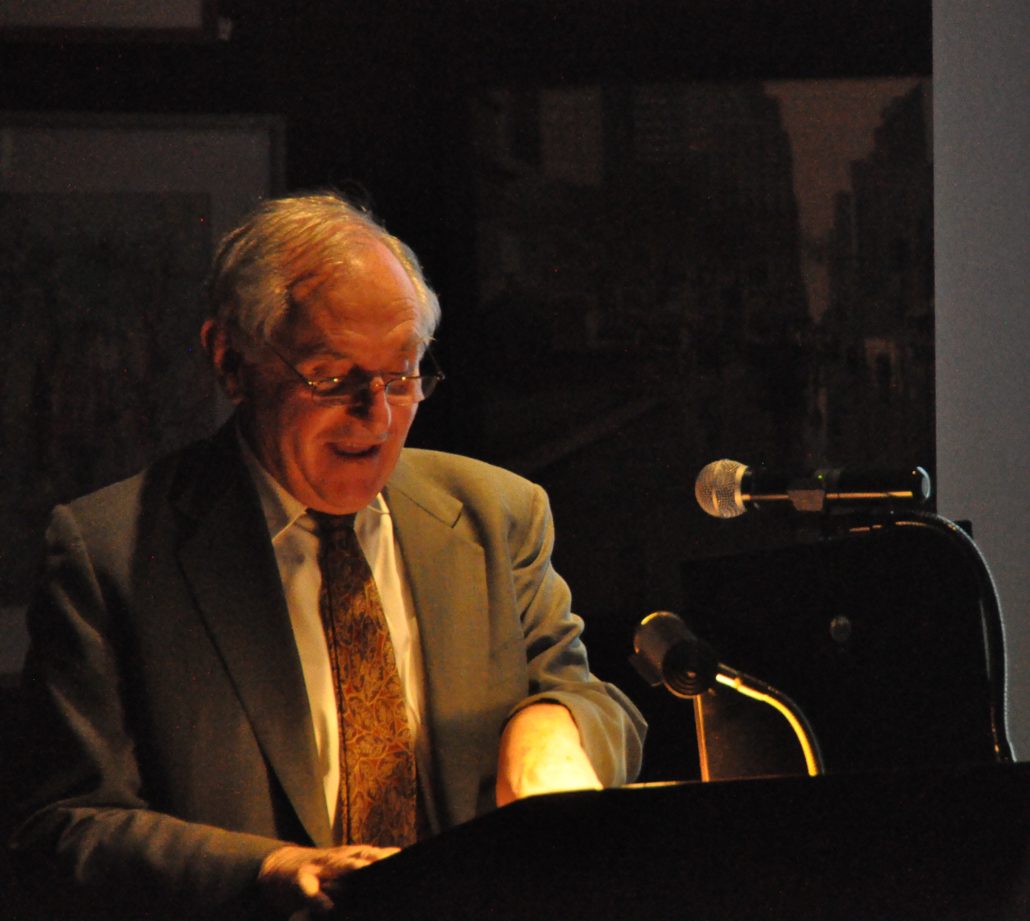
Dr. Martin Eidelberg
Since his professorship at Rutgers University, Dr. Eidelberg has been instrumental in making his extensive scholarship on Watteau and his circle available online. This year, his work on the “Watteau Abecedario” project, an online alphabetical catalogue raisonné will offer online audiences a comprehensive study of his oeuvre and will also address past and current issues of attribution, and in so doing present art history research as an ongoing, organic process. He says of his project that:
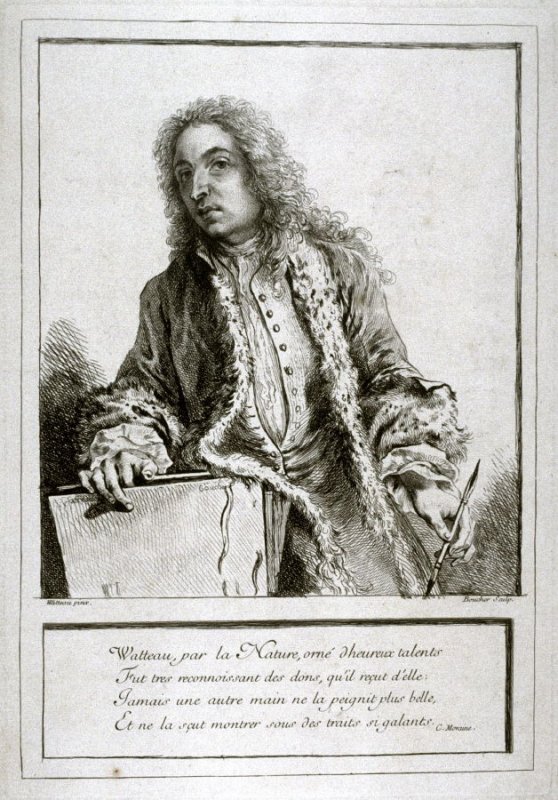
Francois Boucher, Portrait of Antoine Watteau, 1727. Courtesy: FAMSF.
Having the Abecedario available online is much more universal. A show is only on a certain period of time. And my experience is that it mostly goes to three cities, for three months at each city, and then it’s gone. And these days, it’s getting harder and harder to follow a show. The online catalogue raisonné is a way in which art gets distributed not only free of charge, but conveniently. So in part it’s good will. In part, it actually is a very useful tool.
The internet itself is a great tool. Because it really is a way of spreading knowledge and keying in. Now places like the Getty have digitized them and have finding aids. Which means you can just press a few buttons, and you can get every painting by Watteau or Boucher or Fragonard sold between 1680 and 1820. It’s brilliant.
Some people are going to say you’ve taken the human quality out of the humanities but that’s not true because then comes interpretation and it just means you don’t have to do so much other work sifting through the mass of data.
**Be on the lookout in the coming weeks for our full interview with Dr. Eidelberg on his project.
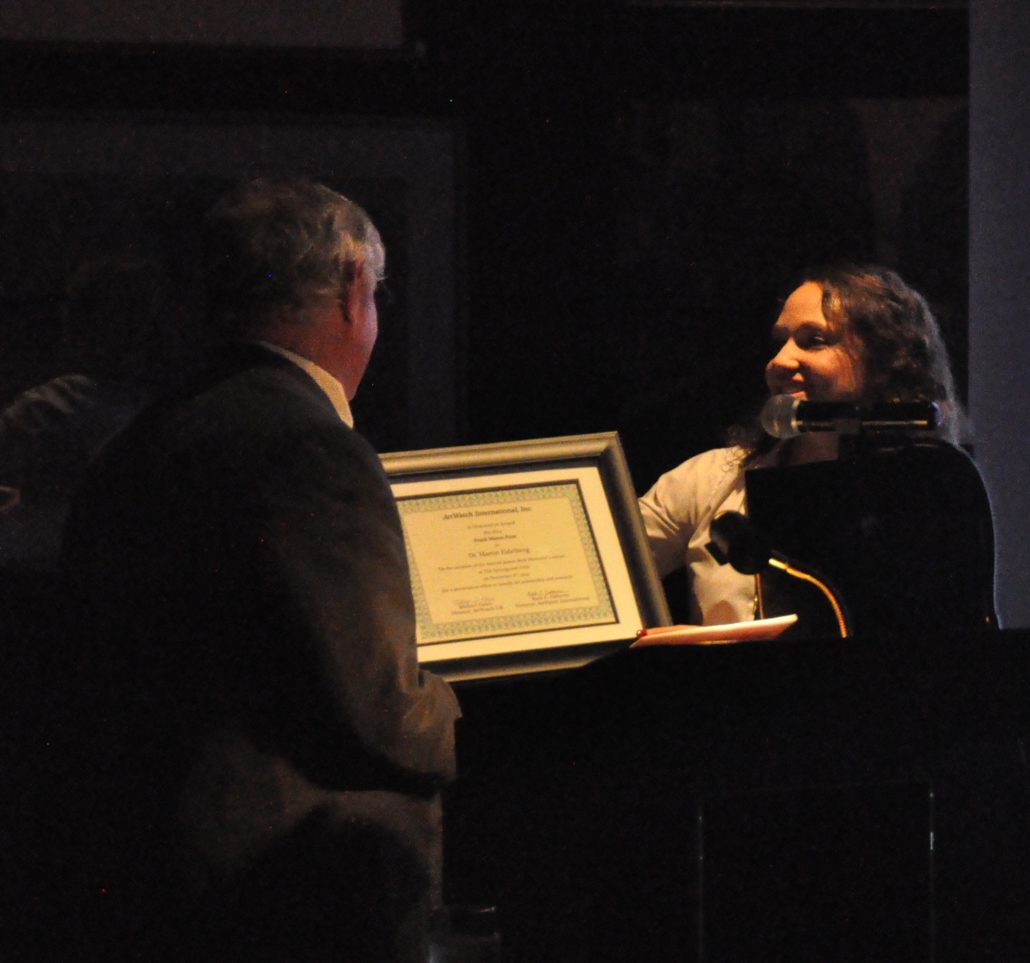
Dr. Eidelberg with Ruth Osborne, Director of ArtWatch International.
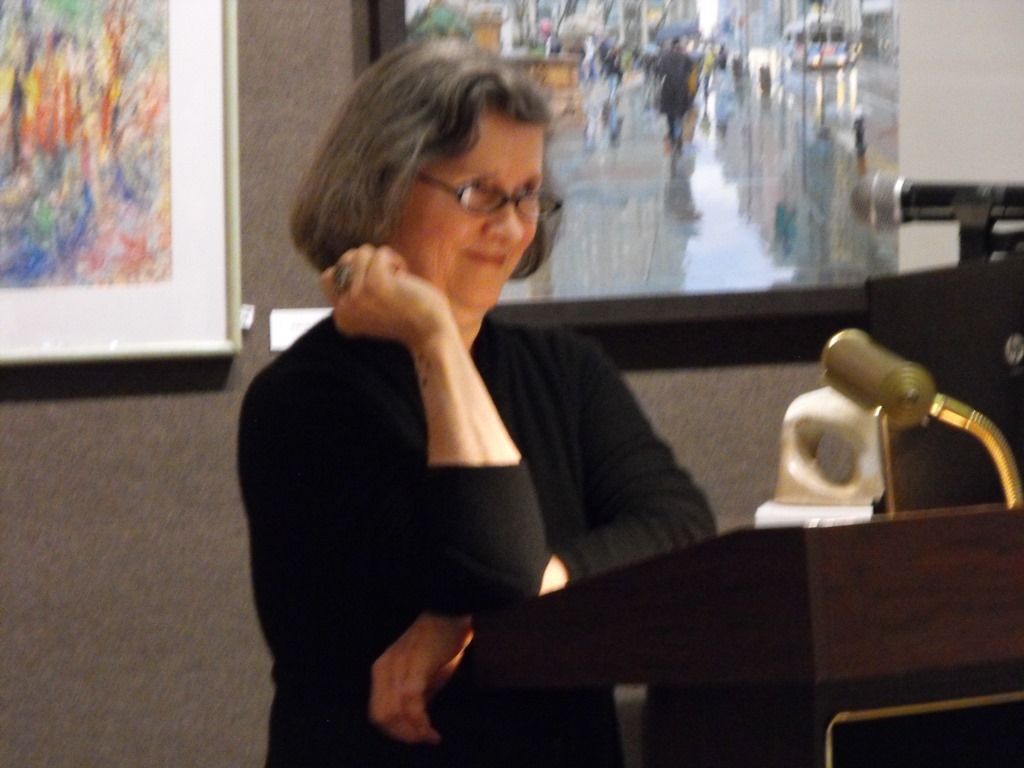
Dr. Elizabeth Simpson
This year’s lecture also enjoyed a most captivating speaker whose lecture focused on the necessity of engaging, and sustaining, a dialogue on art’s behalf. Dr. Elizabeth Simpson, professor of ancient art, archaeology, and museology at the Bard Graduate Center, presented on the excavation and conservation of ancient wooden furniture from King Midas’s Tomb in present-day Turkey.
Since the excavation of royal Phrygian Tumulus MM[1] in Gordion, Turkey in 1957, the story of King Midas’s inlaid wooden furniture has taken several twists and turns. From it, we can learn a great deal about conservation pros and cons, the impact of underdeveloped preservation methods, and the importance of paying close attention to the materials used for storage and display.
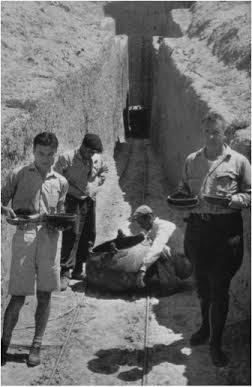
Rodney Young and colleagues outside Tumulus MM, Gordion, 1957.
When the tumulus was first opened by Prof. Rodney Young and archeologists from the University of Pennsylvania Museum, the already-damaged furniture was further harmed by excavation methods and initial attempts at preservation. At this time, there had not been sufficient research or experience in the field of archeological wood conservation, and the furniture suffered. But come the early 1980s, Dr. Simpson had the opportunity to lead a team of conservators in Ankara to correct some of the early mistakes made under Young. Using improved methods and materials, they succeeded in returning the furniture to a more stable condition, even restoring some of the contrast of the wood inlay. The techniques used on this project would set new standards for conservation in the field of dry archeological wood.
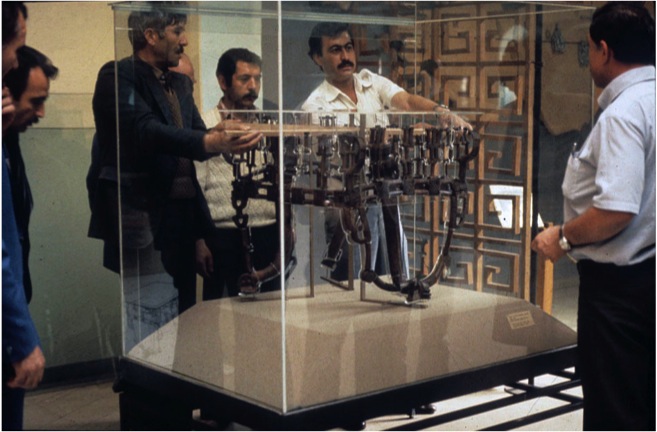
Inlaid table as displayed at Museum at Ankara, 1983.
The display of the newly conserved Midas furniture at the Museum of Anatolian Civilizations in Ankara, Turkey also went through some trial and error. The first glass cases contained materials that damaged the furniture while on display, and had to be replaced in the 1990s. We then learned that, despite the great improvements made by Dr. Simpson and her group, which were able to be sustained through years of careful scrutiny, recent changes at the museum have discarded the improved and safer display cases for new ones that put the furniture in danger of harm yet again. The story is not yet over, and it serves as a prime example that one’s work on behalf of art is never truly finished.
We want to thank Dr. Simpson for sharing with us her piece of the story of King Midas’s furniture, which stimulated a brilliant discussion on the development of conservation practices afterwards. Another warm thank you to Michael Daley, Director of ArtWatch UK, who was able to join us for this year’s lecture. He opened our event with a wonderful speech on the beginnings of ArtWatch and the work of James Beck and Frank Mason. As one who has had the privilege of working closely with Beck for several years, Michael puts forth a sincerity about his work with ArtWatch that is contagious. We here in New York are indebted to his investment in the organization and his work on the behalf of art, and are greatly looking forward to next year’s lecture in London.
[1] Tumulus MM was named as such for “Midas Mound.”

